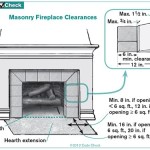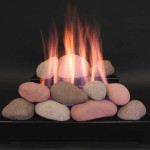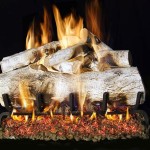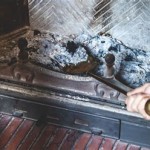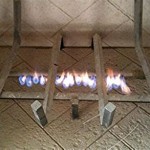Maintaining the Pristine Look of a Stone Fireplace Hearth
A stone fireplace hearth is a focal point in many homes, adding a touch of rustic charm and warmth. However, its porous nature makes it susceptible to stains from soot, ash, and spills. Regular cleaning is essential to maintain its aesthetic appeal and prevent permanent damage. Understanding the proper techniques and cleaning agents is crucial for preserving the integrity and beauty of the stone.
The composition of the stone itself is a key factor in determining the appropriate cleaning method. Different types of stone, such as granite, marble, slate, and fieldstone, possess varying levels of porosity and react differently to various cleaning solutions. Employing the wrong cleaning agent can potentially etch, discolor, or otherwise damage the stone's surface. Therefore, identifying the stone type is the first and most important step in the cleaning process.
Prior to commencing any cleaning procedure, a thorough assessment of the hearth's condition is necessary. This involves identifying the types of stains present, the extent of the staining, and any existing damage, such as cracks or chips. Addressing minor issues promptly can prevent them from escalating into more significant and costly repairs. For instance, small cracks can be sealed with appropriate stone filler to prevent water penetration and further deterioration.
Safety precautions must be prioritized throughout the cleaning process. Wearing gloves protects the hands from harsh cleaning agents and potential irritants. Adequate ventilation is also crucial, especially when using strong chemicals. Opening windows or utilizing a fan can help to dissipate fumes and ensure a safe working environment. Eye protection is advisable to prevent splashes or accidental contact with cleaning solutions.
Essential Tools and Supplies for Cleaning Stone Hearths
The selection of appropriate tools and supplies is vital for effective and safe cleaning. A soft-bristled brush is ideal for scrubbing the stone surface without causing scratches. Avoid using abrasive scrub pads or wire brushes, as these can damage the stone's finish. A vacuum cleaner with a brush attachment is useful for removing loose debris and dust before applying any cleaning solutions.
A neutral pH cleaner specifically designed for stone is the preferred cleaning agent. These cleaners are formulated to gently lift dirt and grime without damaging the stone's delicate surface. Avoid using acidic cleaners, such as vinegar or lemon juice, as these can etch certain types of stone, particularly marble and limestone. Additionally, avoid using abrasive cleaners, such as scouring powders or bleach, as these can scratch and discolor the stone.
For more stubborn stains, a poultice can be used. A poultice is a paste-like mixture that is applied to the stain and allowed to sit for several hours, drawing the stain out of the stone. The specific ingredients for the poultice will depend on the type of stain. For oil-based stains, a mixture of baking soda and water may be effective. For rust stains, a poultice made with diatomaceous earth and hydrogen peroxide may be more appropriate.
Clean water and a soft cloth are essential for rinsing away cleaning solutions and drying the stone surface. Avoid leaving water to sit on the stone, as this can lead to water spots or mineral deposits. A clean, dry cloth should be used to thoroughly dry the hearth after cleaning.
The Step-by-Step Cleaning Process
The initial step involves removing any loose debris from the hearth. This can be accomplished using a vacuum cleaner with a brush attachment or a soft-bristled brush. Pay particular attention to crevices and corners where dust and ash tend to accumulate. Removing loose debris prevents it from being ground into the stone during the cleaning process.
Next, prepare a cleaning solution using a neutral pH stone cleaner and water, following the manufacturer's instructions. Apply the solution to the hearth using a sponge or soft cloth. Avoid saturating the stone, as excessive moisture can penetrate the stone and potentially cause damage. Allow the cleaning solution to sit on the surface for a few minutes to loosen dirt and grime.
Gently scrub the hearth with a soft-bristled brush, paying attention to stained areas. Avoid applying excessive pressure, as this can scratch the stone. Work in small sections, rinsing the brush frequently with clean water. For stubborn stains, apply a poultice as needed, following the instructions provided earlier.
Once the cleaning solution has been applied and the hearth has been scrubbed, thoroughly rinse the surface with clean water. Use a sponge or cloth to remove any remaining cleaning solution. Ensure that all traces of the cleaner are removed to prevent residue buildup.
Finally, dry the hearth thoroughly with a clean, dry cloth. Pay attention to crevices and corners where water may accumulate. Allow the hearth to air dry completely before using the fireplace. If water spots appear after drying, they can often be removed with a damp cloth and gentle buffing.
Preventative Measures for Maintaining a Clean Hearth
Implementing preventative measures can significantly reduce the frequency and intensity of cleaning. Regularly sweeping or vacuuming the hearth will prevent the buildup of dust and ash. Using a fireplace screen will help to contain sparks and embers, reducing the likelihood of staining the surrounding stone.
Promptly cleaning up spills and stains is crucial. The longer a stain sits on the stone, the more difficult it will be to remove. Use a clean cloth to blot the spill immediately, avoiding rubbing, which can spread the stain. Once the excess liquid has been absorbed, clean the area with a neutral pH stone cleaner.
Consider applying a stone sealant to protect the hearth from stains and water damage. Sealants create a barrier on the surface of the stone, preventing liquids and stains from penetrating the pores. Follow the manufacturer's instructions carefully when applying a sealant, and reapply as needed to maintain its effectiveness.
Regular inspection of the hearth will help to identify any potential problems early on. Look for cracks, chips, or signs of water damage. Addressing these issues promptly can prevent them from escalating into more significant and costly repairs. Consult with a professional stone restoration specialist for any major repairs or concerns about the integrity of the stone.
By understanding the properties of the stone, utilizing the appropriate cleaning methods, and implementing preventative measures, the beauty and longevity of a stone fireplace hearth can be preserved for years to come. Consistent care and attention will ensure that the hearth remains a cherished focal point in the home.

How To Clean A Stone Fireplace Homeowner S Guide Bob Vila

Stone Fireplace Makeover Part 1 Plans Prep Organized Ish

How To Clean A Limestone Fireplace

Ask A Fireplace Expert How To Clean Stone

How To Clean Stone Fireplace Maid Services Talk Local Blog

How To Clean A Neglected Stone Fireplace Georgian Cottage

Stone Fireplace Makeover Part 1 Plans Prep Organized Ish

How To Clean A Limestone Fireplace Stamford Stone At Home

How To Clean Stone Fireplace Mantels

Old Grubby Stone Fireplace Transformed In Brighton Cleaning And Maintenance


